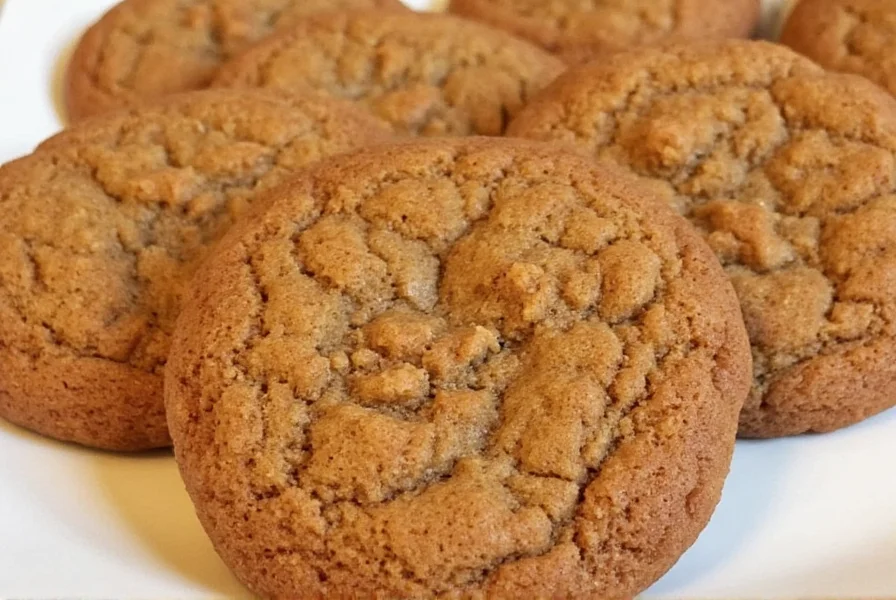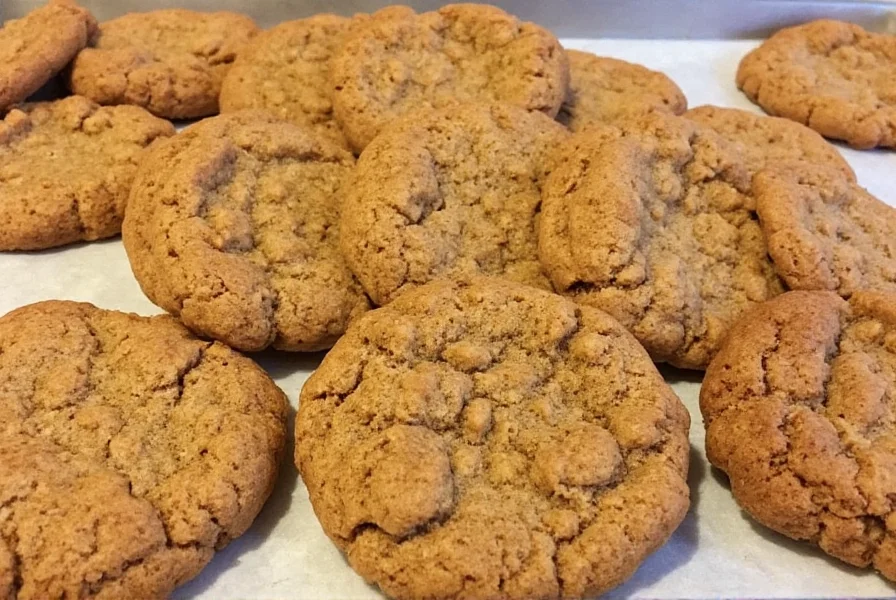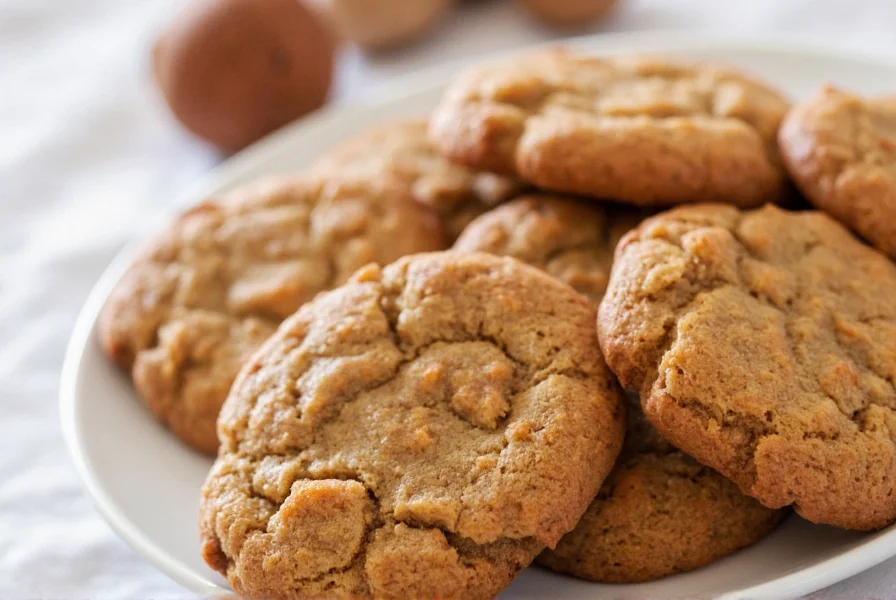The Science Behind Chewy Ginger Molasses Cookies
Understanding why certain techniques produce chewy rather than crisp ginger molasses cookies requires examining the chemistry of ingredients. The texture of cookies depends on four critical factors: moisture content, sugar composition, fat type, and baking duration. For chewy ginger molasses cookies specifically, the ratio of brown sugar to white sugar is paramount—brown sugar contains molasses which retains moisture, creating that desirable soft texture.
Molasses itself plays a dual role: its acidity reacts with baking soda to create lift while its hygroscopic nature (ability to attract moisture) keeps cookies soft. When searching for how to make chewy ginger molasses cookies, many home bakers overlook that not all molasses is created equal. Light molasses provides milder flavor with better moisture retention than robust or blackstrap varieties, which can dry out cookies.
| Ingredient | Role in Chewiness | Optimal Amount |
|---|---|---|
| Brown Sugar | Retains moisture through molasses content | 1 cup (packed) |
| White Sugar | Creates some crispness; reduce for chewier results | 1/2 cup |
| Light Corn Syrup | Prevents crystallization, enhances chew | 1-2 tablespoons |
| Cold Butter | Slower melt prevents spreading | 1/2 cup (1 stick) |
Perfect Chewy Ginger Molasses Cookies Recipe
This tested recipe delivers consistently chewy results with crackled tops and soft centers. The critical step many miss when trying to achieve soft ginger molasses cookies is proper chilling—don't skip the 24-hour refrigeration!
Ingredients
- 2 1/4 cups all-purpose flour
- 2 teaspoons ground ginger
- 1 1/2 teaspoons cinnamon
- 1/2 teaspoon cloves
- 1/2 teaspoon salt
- 1/2 teaspoon baking soda
- 1/2 cup unsalted butter, cold and cubed
- 1 cup packed light brown sugar
- 1/2 cup granulated sugar
- 1/4 cup light molasses
- 1 large egg
- 1-2 tablespoons light corn syrup (for extra chew)
Step-by-Step Instructions
- Mix dry ingredients: Whisk flour, ginger, cinnamon, cloves, salt, and baking soda in a bowl.
- Cream fats and sugars: Beat cold butter, brown sugar, and white sugar until just combined (do not over-cream).
- Add wet ingredients: Mix in molasses, egg, and corn syrup until incorporated.
- Combine: Gradually add dry ingredients to wet, mixing until just combined.
- Chill dough: Refrigerate for at least 24 hours (critical for texture development).
- Preheat and portion: Preheat oven to 350°F (175°C). Scoop 1.5-inch balls onto parchment-lined baking sheets.
- Bake: 10-12 minutes until edges are set but centers look underdone.
- Cool: Let cookies rest on baking sheet for 5 minutes before transferring to cooling rack.

Why Your Ginger Cookies Might Not Be Chewy (And How to Fix It)
Many bakers struggle with the question why are my ginger molasses cookies not chewy. Common culprits include:
- Insufficient chilling time: Dough needs 24 hours to hydrate flour properly and prevent spreading
- Overbaking: Even 60 seconds too long creates crisp edges; remove when centers look soft
- Incorrect sugar ratio: Too much white sugar draws out moisture during baking
- Warm dough: Scooping warm dough causes immediate spreading in oven
- Wrong molasses type: Blackstrap molasses dries out cookies; use light or dark instead
For those seeking the best recipe for soft ginger molasses cookies, consider adding 1-2 tablespoons of corn syrup or honey to your dough. These ingredients inhibit sugar crystallization and retain moisture better than sugar alone. Another professional tip: measure your flour properly by spooning it into the measuring cup and leveling—scooping directly packs too much flour, drying out your cookies.
Maintaining Chewiness After Baking
The work doesn't end when cookies come out of the oven. To preserve that perfect chewy texture:
- Store cookies in an airtight container with a slice of bread (the bread's moisture migrates to cookies)
- Avoid refrigeration which accelerates staling
- Re-crisp chewy cookies by microwaving for 5-10 seconds with a damp paper towel
- Freeze dough balls for fresh-baked cookies anytime (bake frozen, adding 1-2 minutes)
Understanding the science behind chewy ginger cookies transforms baking from guesswork to precision. The chewiness comes from controlled gluten development, proper moisture retention, and strategic ingredient interactions—not luck. When troubleshooting molasses cookie texture problems, always check your oven temperature with an independent thermometer; many ovens run hotter than indicated, causing premature drying.

Frequently Asked Questions
How do I keep ginger molasses cookies chewy after baking?
Store cookies in an airtight container with a slice of bread or a small piece of apple. The moisture from these items migrates to the cookies, maintaining chewiness for up to 5 days. Avoid refrigeration, which accelerates staling.
Why do my ginger cookies spread too much and become thin?
Excessive spreading usually indicates insufficient chilling time (minimum 24 hours required), butter that was too warm when mixed, or too much sugar relative to flour. Ensure your dough is thoroughly chilled and measure ingredients by weight for accuracy.
Can I substitute blackstrap molasses for light molasses in chewy cookies?
Blackstrap molasses creates a stronger flavor but dries out cookies faster due to lower sugar content. For chewy results, use light or dark molasses. If you must use blackstrap, replace only half the molasses with it and add 1-2 tablespoons of honey to compensate for moisture loss.
What's the ideal baking temperature for chewy ginger cookies?
350°F (175°C) is optimal. Higher temperatures cause rapid spreading and drying, while lower temperatures extend baking time, drawing out moisture. Always preheat your oven completely and use an oven thermometer to verify accuracy.
How can I make gluten-free chewy ginger molasses cookies?
Use a quality 1:1 gluten-free flour blend with xanthan gum. Add 1/2 teaspoon xanthan gum if your blend doesn't include it. Increase brown sugar by 2 tablespoons and add 1 extra tablespoon of molasses to compensate for GF flour's higher moisture absorption.











 浙公网安备
33010002000092号
浙公网安备
33010002000092号 浙B2-20120091-4
浙B2-20120091-4